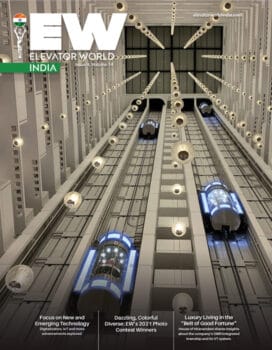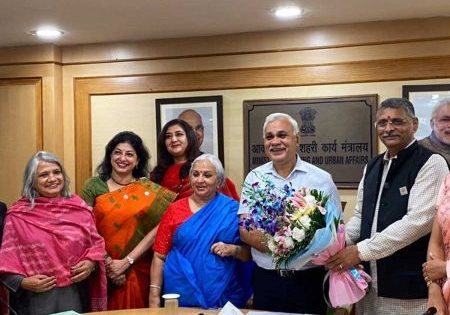In this Readers’ Platform, your author outlines the keys to keeping customers happy in a rapidly changing world.
Digitalization and connected elevators have been top of mind for many elevator companies for many years now. Digitalization provides them with the tools they need to generate value and helps them successfully address new business challenges. Interactive services can be tailored to specific user needs, both in customer service and vertical-transportation (VT) sales. The challenge begins with the requirement of implementing a system that can make the business flexible and resilient, as well as maintain a vital and profitable relationship with the real protagonist of the new economic paradigm: the user-consumer.
Operations must become increasingly focused on the customer to navigate an emerging marketplace that is being dramatically and dynamically transformed in this age of digital disruption.
Moreover, the digitalization of the elevator industry is influencing business models and structures. User-experience (also known as UX) designers, data scientists and agile teams are commonly integrated with corporate IT teams, called upon to reinvent or create new services. The marketing and communications department, meanwhile, has assumed a primary role in designing an engaging customer experience, which is indispensable for customer retention.
In the elevator industry, the potential of digital tools has also found wide application in operations. “Digital” is a key factor for operational excellence.
Today’s customers expect immersive digital experiences in almost every aspect of engagement, be it processes or products. They need integrated, innovative and simple-to-use solutions that make products and equipment easier to handle, be it elevator or any other service, and create conditions for personalized interaction and communication.
With the new profile of the user-consumer, a major task for elevator companies, in the context of digitalization, is winning over the next generation of elevator customers. Even though elevator customers differ in their consumption practices and preferences, a growing number want to be prioritized by their service providers, and want to feel recognized as having distinct needs.
This new user-consumer wants:
- Clarity of communication that is appropriately timed and proactive.
- Execution and support that is self-monitored and traceable. (Service executions are currently inconsistent and cumbersome to track.)
- Ease of doing business that ensures a sense of value, quick response, easy resolution and a simplified process of interacting with elevator companies.
- Higher expectation for correct, complete and transparent processes and information flow.
- Dynamic, bidirectional communication with their elevator company.
The customer wants a complete digital solution for VT equipment, enabling a whole range of new digital products and services. Whether they own, manage or use an elevator or an escalator, the new user-customer is constantly comparing benefits such as enhanced uptime, deeper insights into issues, superior convenience and, above all, value for the money.
Each of these “new” consumers has their own needs and expectations, which must be investigated, listened to and satisfied. Only in this way is it possible to formulate a proposal that is in line with the customer’s actual needs. In other words, it is necessary to get to know the customer, extracting information and insights that are truly relevant from the available data.
Today’s customers expect immersive digital experiences in almost every aspect of engagement, be it processes or products.
How the VT Industry Has Adopted Digitalization
Elevators, escalators and moving walks transport millions of people every day. In the VT industry, processes are increasingly customer-centric. Operations must become increasingly focused on the customer to navigate an emerging marketplace that is being dramatically and dynamically transformed in this age of digital disruption. The traditional model simply isn’t enough anymore. Today’s customers are not content to be supplied on the terms of their contracts, nor are they content to sit back and wait for sporadic communications that lack a true, two-way exchange with their service providers.
Digitalization of Elevator and Escalator Service
The following areas hold potential for digitalization in VT:
- Big data analytics and AI-based predictive maintenance
- A smartphone app to monitor elevator uptime, downtime, door operation, safeties, lights, ventilation, noise, vibration, machine temperature, pit water entry, etc.
- IoT-based smart service that includes remote monitoring and inspection, intelligent machine conversation, machine learning and cloud-based preventive maintenance, sensing and collecting data on speed, motor temperature, door failure, etc., to create breakdown-prediction models
- HoloLens-based inspection and maintenance
- Customer care centers to track open items, target dates for completions, analyze trends and perform remote car call and status monitoring through a customer smartphone, two-way video communication system with remote operators
- These are some of the internal challenges faced by both VT providers and customers:
- Hardware and software from the old system not being compatible with new system, hence, old hardware that requires upgrades
- Interconnections/infrastructure that depends on local providers and mobile network technology that varies in coverage quality across locations
- Manpower; Every engineer must be upgraded to adapt to the end technology.
Recommendations
How can we better address the pain points with these technologies for our customers, and how can we help them grow their businesses with digital packages? The customer should be advised to start with a pilot program and select their digital coverage package, which can be rolled out in phases. This helps build a business case to support future deployments and allocate resources. Ready-to-pay digital customers should be preferred.
A mobile application that provides remote elevator access is one easy tool. Such applications are easy to install and compatible with most mobile phones. Such GPS-based apps allow on-location reporting, and can incorporate a geofence — a virtual perimeter for a geographic area. Cloud data storage is preferred, as it makes saving and sharing data from many devices easy.
Digitalization in the elevator industry is now obligatory, not only in modernizing infrastructures, but, above all, in achieving a genuinely innovative type of communication that is capable of being both reactive and proactive to the often-unexpressed needs of the consumer. Digitalization is not so much a technological trend, but rather, a change in business perspective that can and must finally put the customer at the center of communications processes. This is true even more so now that digitalization has exponentially ramped up the possibilities data can provide to create tailored, value-added services.
COVID-19 has contributed more to the evolution of digital services and driven the advancement and adoption of new technologies aimed at protecting elevator users. It won’t be long before elevators recognize passengers and predict where they are going based on machine learning. In the future, when people ride elevators, streaming services and content in the cabin will not only be adapted to the time of the day, but also to individual passengers. For me, the digitalization of services in the elevator industry will be fun to watch, and even more fun to be a part of.
We are surrounded by screens: in public transportation, at home, in the street and now, in elevators. Soon, I predict a fully digital elevator and escalator industry.
Get more of Elevator World. Sign up for our free e-newsletter.





